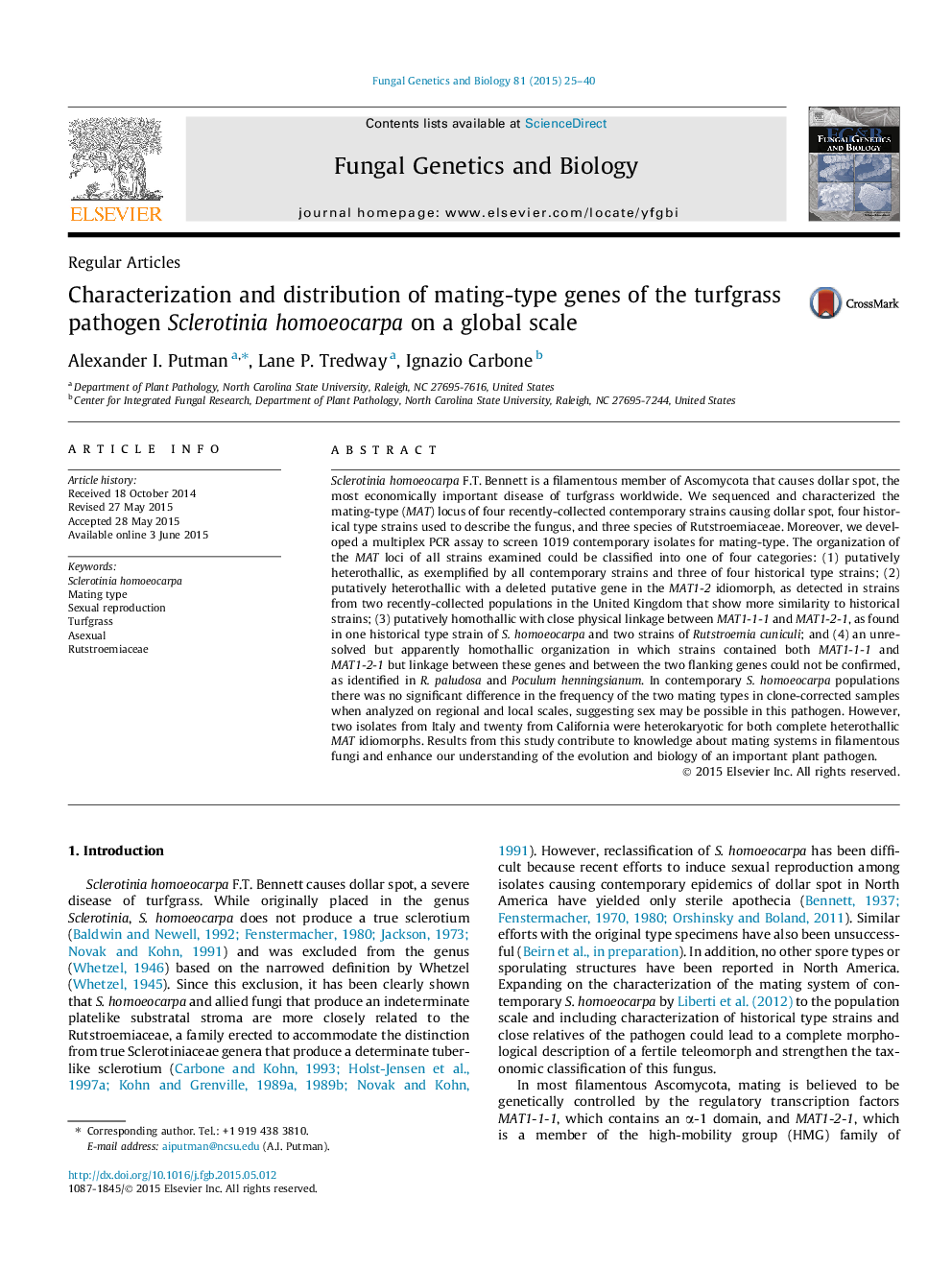| Article ID | Journal | Published Year | Pages | File Type |
|---|---|---|---|---|
| 8470660 | Fungal Genetics and Biology | 2015 | 16 Pages |
Abstract
Sclerotinia homoeocarpa F.T. Bennett is a filamentous member of Ascomycota that causes dollar spot, the most economically important disease of turfgrass worldwide. We sequenced and characterized the mating-type (MAT) locus of four recently-collected contemporary strains causing dollar spot, four historical type strains used to describe the fungus, and three species of Rutstroemiaceae. Moreover, we developed a multiplex PCR assay to screen 1019 contemporary isolates for mating-type. The organization of the MAT loci of all strains examined could be classified into one of four categories: (1) putatively heterothallic, as exemplified by all contemporary strains and three of four historical type strains; (2) putatively heterothallic with a deleted putative gene in the MAT1-2 idiomorph, as detected in strains from two recently-collected populations in the United Kingdom that show more similarity to historical strains; (3) putatively homothallic with close physical linkage between MAT1-1-1 and MAT1-2-1, as found in one historical type strain of S. homoeocarpa and two strains of Rutstroemia cuniculi; and (4) an unresolved but apparently homothallic organization in which strains contained both MAT1-1-1 and MAT1-2-1 but linkage between these genes and between the two flanking genes could not be confirmed, as identified in R. paludosa and Poculum henningsianum. In contemporary S. homoeocarpa populations there was no significant difference in the frequency of the two mating types in clone-corrected samples when analyzed on regional and local scales, suggesting sex may be possible in this pathogen. However, two isolates from Italy and twenty from California were heterokaryotic for both complete heterothallic MAT idiomorphs. Results from this study contribute to knowledge about mating systems in filamentous fungi and enhance our understanding of the evolution and biology of an important plant pathogen.
Related Topics
Life Sciences
Biochemistry, Genetics and Molecular Biology
Cell Biology
Authors
Alexander I. Putman, Lane P. Tredway, Ignazio Carbone,
